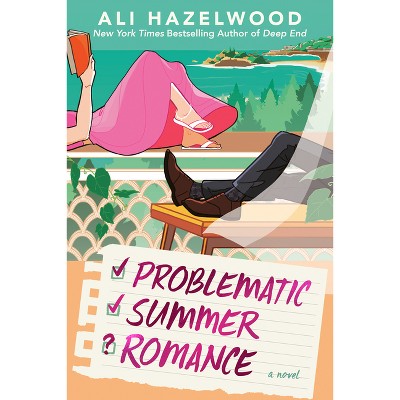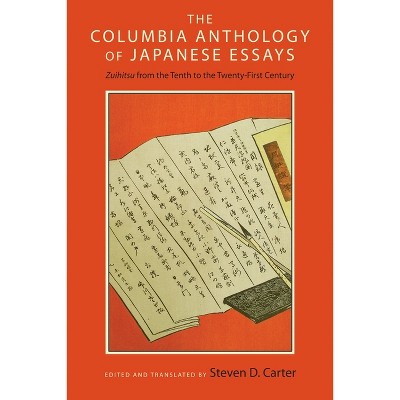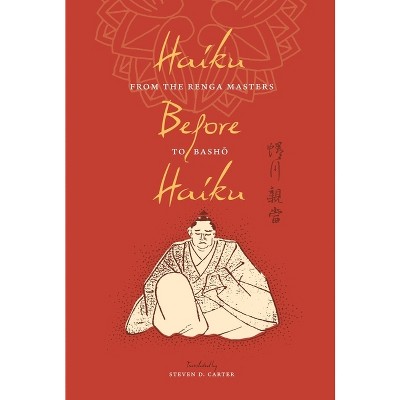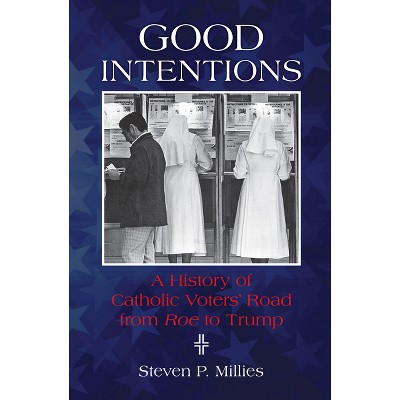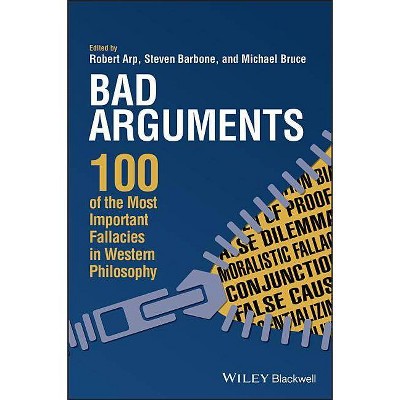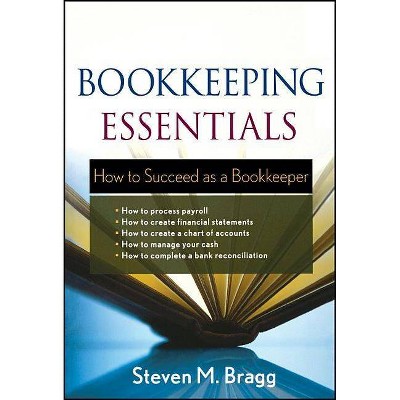$30.49 when purchased online
Target Online store #3991
About this item
Highlights
- How to Read a Japanese Poem offers a comprehensive approach to making sense of traditional Japanese poetry of all genres and periods.
- About the Author: Steven D. Carter is Yamato Ichihashi Chair in Japanese History and Civilization, emeritus, at Stanford University.
- 344 Pages
- Poetry, Asian
Description
About the Book
How to Read a Japanese Poem offers a comprehensive approach to making sense of traditional Japanese poetry of all genres and periods. Steven D. Carter explains to Anglophone students the methods of composition and literary interpretation used by Japanese poets, scholars, and critics from ancient times to the present.Book Synopsis
How to Read a Japanese Poem offers a comprehensive approach to making sense of traditional Japanese poetry of all genres and periods. Steven D. Carter explains to Anglophone students the methods of composition and literary interpretation used by Japanese poets, scholars, and critics from ancient times to the present, and adds commentary that will assist the modern reader.
How to Read a Japanese Poem presents readings of poems by major figures such as Saigyō and Bashō as well as lesser known poets, with nearly two hundred examples that encompass all genres of Japanese poetry. The book gives attention to well-known forms such as haikai or haiku, as well as ancient songs, comic poems, and linked verse. Each chapter provides examples of a genre in chronological order, followed by notes about authorship and other contextual details, including the time of composition, physical setting, and social occasion. The commentaries focus on a central feature of Japanese poetic discourse: that poems are often occasional, written in specific situations, and are best read in light of their milieu. Carter elucidates key concepts useful in examining Japanese poetics as well as the technical vocabulary of Japanese poetic discourse, familiarizing students with critical terms and concepts. An appendix offers succinct definitions of technical terms and essays on aesthetic ideals and devices.Review Quotes
Carter's colleagues and students have long waited to take this journey with him as guide to the formal subtleties and aesthetic principles that make Japanese poetry so rewarding and that he understands and explains so well. This is a most welcome volume.
--Edward Kamens, Yale UniversityCarter's book, no esoteric over-academic tome, is a lively exploration of Japanese poetic discourse, a guide to the formal delicacy and subtlety of Japanese verse, opening it up for the reader and showing, not telling, what's inside. His book is accessible to all who enjoy Japanese poetry; he writes intelligently, sensitively and passionately about it, and the result is an indispensable book which will make Japanese poetry come alive and reveal its depth at the same time.--John Butler "Asian Review of Books"
From the songs of ancient Japan to haiku on World War II, through snow-flecked pines and into noisy streets, Carter guides us through more than a millennium of Japanese verse. Thanks to his contextual insights and masterful translations, the "clouds clear away" to reveal the beauty, power, wit, and utility of Japanese poetry.--Christina Laffin, University of British Columbia
This fresh collection of poems, most of which have never appeared in translation before, illuminates the core and continuity of Japanese poetry. Carter's commentary, based on a vast erudition worn as lightly as a feathered robe, opens up each poem, the world and the heart together. This book will enlighten and delight general readers and specialists alike.--Sonja Arntzen, University of Toronto
In this thorough and wide-ranging book, Carter explores what to look for and what's not obvious in each of Japan's distinct genres of poetry. How to Read a Japanese Poem offers detailed analyses of specific poems in each era, exploring the textual and cultural context, social occasion, and the location and timing of composition. This book takes readers below the surface to understand the nuances of context.--Michael Dylan Welch, founder and president, Tanka Society of America
This book is a masterful tour of Japanese poetry from the earliest times to the late nineteenth century. The range of knowledge is astonishing, and there are very few people--perhaps no one--who could attempt this kind of book except for the author.--Torquil Duthie, University of California, Los Angeles
About the Author
Steven D. Carter is Yamato Ichihashi Chair in Japanese History and Civilization, emeritus, at Stanford University. His Columbia University Press books include Haiku Before Haiku: From the Renga Masters to Bashō (2011) and The Columbia Anthology of Japanese Essays: Zuihitsu from the Tenth to the Twenty-First Century (2014).Dimensions (Overall): 9.1 Inches (H) x 6.1 Inches (W) x .9 Inches (D)
Weight: 1.1 Pounds
Suggested Age: 22 Years and Up
Number of Pages: 344
Genre: Poetry
Sub-Genre: Asian
Publisher: Columbia University Press
Format: Paperback
Author: Steven D Carter
Language: English
Street Date: June 11, 2019
TCIN: 85174795
UPC: 9780231186834
Item Number (DPCI): 247-61-8441
Origin: Made in the USA or Imported
If the item details above aren’t accurate or complete, we want to know about it.
Shipping details
Estimated ship dimensions: 0.9 inches length x 6.1 inches width x 9.1 inches height
Estimated ship weight: 1.1 pounds
We regret that this item cannot be shipped to PO Boxes.
This item cannot be shipped to the following locations: American Samoa (see also separate entry under AS), Guam (see also separate entry under GU), Northern Mariana Islands, Puerto Rico (see also separate entry under PR), United States Minor Outlying Islands, Virgin Islands, U.S., APO/FPO
Return details
This item can be returned to any Target store or Target.com.
This item must be returned within 90 days of the date it was purchased in store, shipped, delivered by a Shipt shopper, or made ready for pickup.
See the return policy for complete information.





